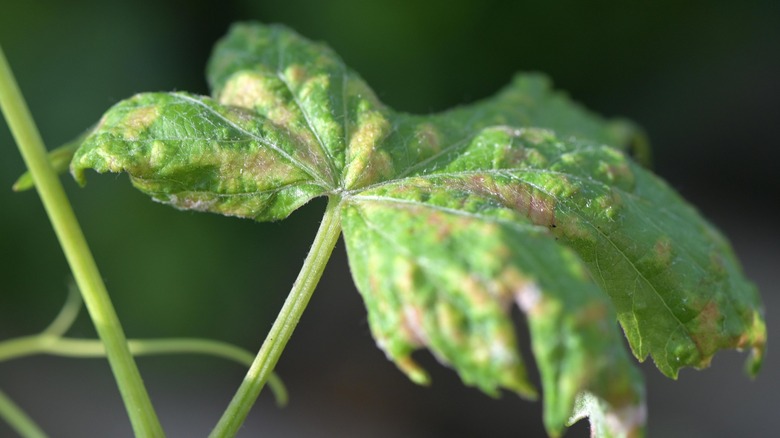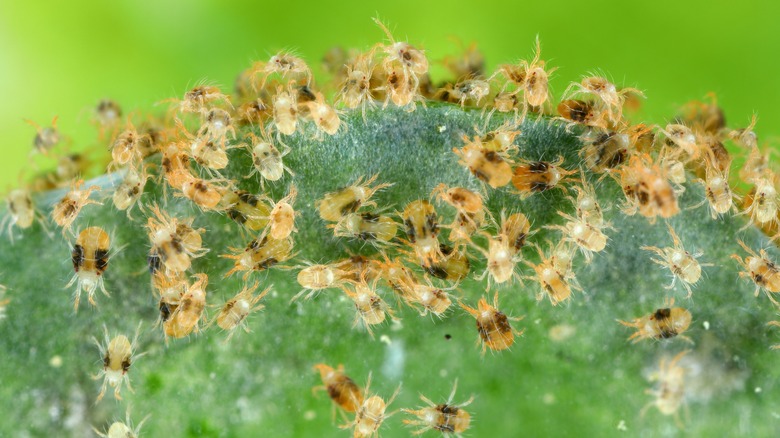How To Spot Spider Mite Eggs On Plants Before They Become A Problem
We may receive a commission on purchases made from links.
Spider mites are a real nuisance. These tiny little bugs can be a little bigger than a pinhead, but an infestation can wreak havoc on your garden or house plants. They feed by sucking the juice out of the leaf cells which then collapse. A mass of white specks is sometimes seen on leaves (loss of color is another sign), and they soon begin to wither. Spider mites lay a dozen eggs a day, and these develop into full-grown adults in as little as a week so if they aren't identified quickly, the whole plant is in danger. There are numerous simple and effective ways to get rid of spider mites once you've found them, but spotting them early can be difficult.
The main challenge with identifying spider mite eggs is their size. The mites themselves are approximately 1/20 to 1/25 inch, but the eggs may be too small to see with the naked eye. Investing in a pocket magnifying glass is a good idea, like this one by Phicant for under $6. They are a great help as part of a regular regime of checking your plants for pests. It's important to be vigilant because spider mites can overwinter as adults or eggs and begin feeding again in spring.
Other tell-tale signs of spider mites
Several types of spider mites weave webs and this can be a sign of lots of eggs or large colonies of adults. Webbing appears over a comparatively large area so the presence of eggs can be seen more clearly. It also differentiates a spider mite infection from similar destructive pests like aphids and thrips. The two-spotted, or red spider mite is a common and particularly destructive greenhouse and garden pest that feeds on flowers, fruit, and vegetables. It should be easier to spot than some because of its color. Additionally, if you rub the underside of the leaves, you may feel a coarse or sandy texture, which is the cast-off skins and dead bodies of the spider mites that have been living there.
There are many commercial and homemade products for killing spider mites on outdoor plants but a more natural and more effective long-term approach is to encourage beneficial predators like lacewings and ladybugs. They feed on spider mites and many other plant pests, so although you'll still want to keep your eyes open for problems, these tiny assassins will do a lot of the work for you. Unfortunately, this is not an option for house plants, but washing the spider mites and eggs off with plain tap water works, as does spraying them with Neem oil, which is an environmentally friendly pesticide.

